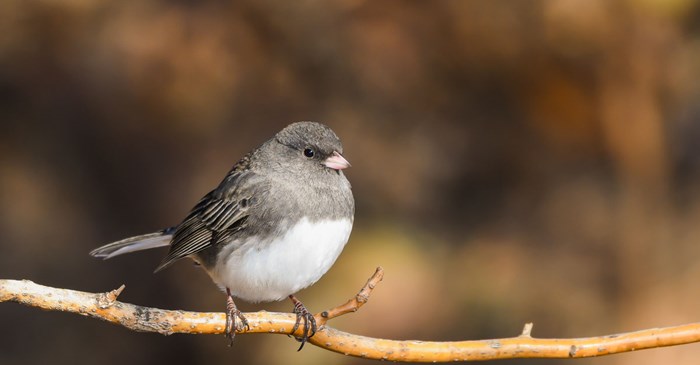Scientists recently came out with the startling news that nearly 3 billion birds have disappeared in the last 50 years. Among these vanishing birds is the Dark-eyed Junco. In these five decades, there are 168 million fewer of these soft, charcoal gray birds with pink beaks. According to Partners in Flight, their population has seen a 40% decline, thanks in part to habitat loss.
We often refer to these birds as snowbirds, because their idea of flying south for the winter is migrating from Canada to the continental U.S., including the very northernmost states. When you see them at your feeder or pecking around on the ground, it’s a sure sign of the arrival of winter. Learn more about this bird by reading our blog.
The good news is, you can implement some bird-friendly practices that support the Dark-eyed Junco.
Fill your feeders with the right stuff
The Dark-eyed Junco prefers foraging off the ground, so when you fill your feeders with Lyric Supreme Wild Bird Mix, be sure and scatter some of the feed on the ground. They'll be drawn to the sunflower seeds, white proso millet, shelled peanuts, Nyjer seed, and all of the other wholesome ingredients included. Because they join foraging flocks with bluebirds and other sparrows in the winter, they may show up with a few friends.
Reimagine your landscaping
Supporting birds means rethinking the American ideal of the perfectly manicured yard. During your autumn clean up, let those ornamental grasses stay standing. Inside those fat grass heads are tasty seeds that juncos like to eat and add a pleasing texture to their diet. By summer, they forage for insects in leaf litter and the underbrush. So if you live in their summer habitat, native plants and shrubs create an ideal habitat that offers the food and shelter they’re looking for.
Crash-proof your windows
There are many birds susceptible to window collisions, and the Dark-eyed Junco is one of them. Though most birds aren’t usually instantly killed after colliding with windows, they often suffer from brain swelling after the crash that is detrimental to their health. Do what you can to keep them safe. Read our blog for tips on stopping songbirds from crashing into the windows.
Share your junco sightings
Take photos of Dark-eyed Juncos at your feeder, and share your snaps on social media. If it helps just one friend learn its name, you’ve made a difference! Go a step further and become a citizen scientist. Joining eBird lets you use your mobile device to share and upload bird sightings in the convenience of your home. This gives scientists and researchers valuable information about bird populations and how they’re thriving.
For additional information on how to improve your yard for birding habitats, visit the Lyric Wild Bird Food Habitat page, which includes tips on nesting, bird boxes, bird-friendly landscapes and much more.
